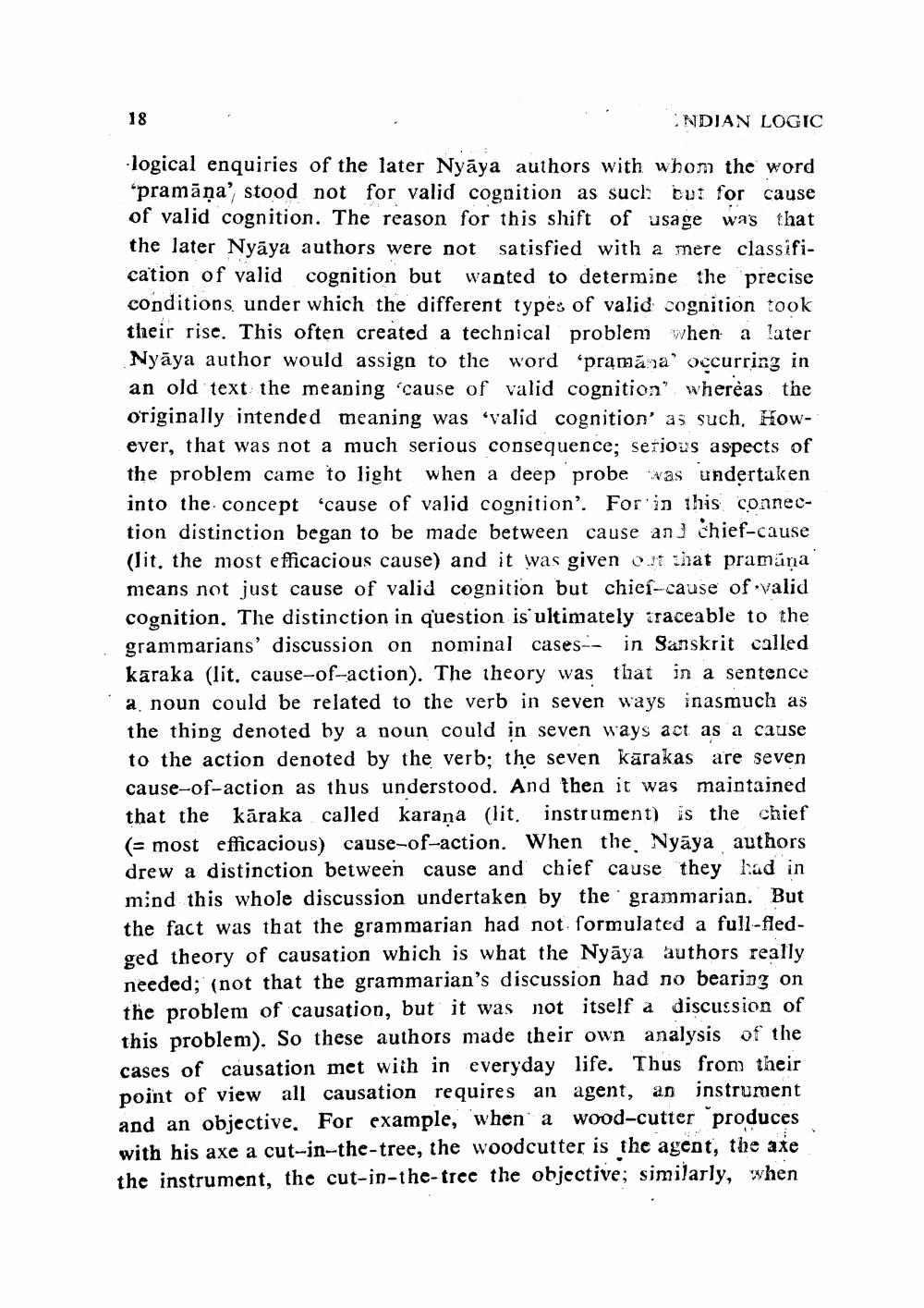________________
18
NDIAN LOGIC
logical enquiries of the later Nyāya authors with whom the word "pramāna' stood not for valid cognition as such: but for cause of valid cognition. The reason for this shift of usage was that the later Nyāya authors were not satisfied with a mere classification of valid cognition but wanted to determine the precise conditions under which the different types of valid cognition took their rise. This often created a technical problem when a later Nyāya author would assign to the word 'prąmā a' occurring in an old text the meaning 'cause of valid cognition' whereas the originally intended meaning was 'valid cognition' as such, However, that was not a much serious consequence; serious aspects of the problem came to light when a deep probe was undertaken into the concept 'cause of valid cognition'. For in this connection distinction began to be made between cause and chief-cause (lit, the most efficacious cause) and it was given out hat pramāna means not just cause of valid cognition but chief-cause of valid cognition. The distinction in question is ultimately traceable to the grammarians' discussion on nominal cases-- in Sanskrit called karaka (lit, cause-of-action). The theory was that in a sentence a noun could be related to the verb in seven ways inasmuch as the thing denoted by a noun could in seven ways act as a cause to the action denoted by the verb; the seven karakas are seven cause-of-action as thus understood. And then it was maintained that the kāraka called karana (lit. instrument) is the chief (e most efficacious) cause-of-action. When the Nyāya authors drew a distinction between cause and chief cause they had in mind this whole discussion undertaken by the grammarian. But the fact was that the grammarian had not formulated a full-fledged theory of causation which is what the Nyāya authors really needed; (not that the grammarian's discussion had no bearing on the problem of causation, but it was not itself a discussion of this problem). So these authors made their own analysis of the cases of causation met with in everyday life. Thus from their point of view all causation requires an agent, an instrument and an objective. For example, when a wood-cutter `produces with his axe a cut-in-the-tree, the woodcutter is the agent, the axe the instrument, the cut-in-the-tree the objective; similarly, when




